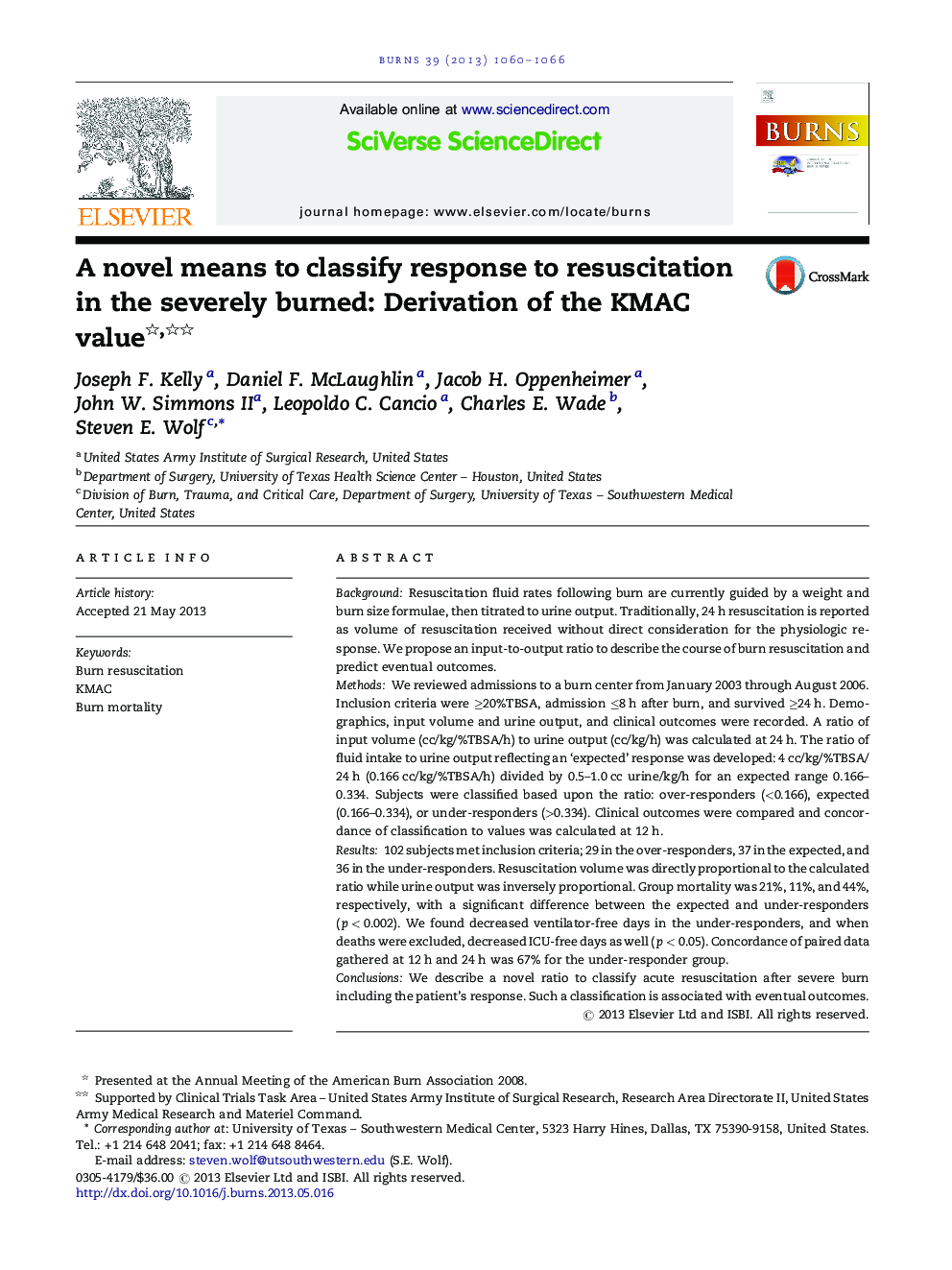| کد مقاله | کد نشریه | سال انتشار | مقاله انگلیسی | نسخه تمام متن |
|---|---|---|---|---|
| 3104822 | 1191665 | 2013 | 7 صفحه PDF | دانلود رایگان |

BackgroundResuscitation fluid rates following burn are currently guided by a weight and burn size formulae, then titrated to urine output. Traditionally, 24 h resuscitation is reported as volume of resuscitation received without direct consideration for the physiologic response. We propose an input-to-output ratio to describe the course of burn resuscitation and predict eventual outcomes.MethodsWe reviewed admissions to a burn center from January 2003 through August 2006. Inclusion criteria were ≥20%TBSA, admission ≤8 h after burn, and survived ≥24 h. Demographics, input volume and urine output, and clinical outcomes were recorded. A ratio of input volume (cc/kg/%TBSA/h) to urine output (cc/kg/h) was calculated at 24 h. The ratio of fluid intake to urine output reflecting an ‘expected’ response was developed: 4 cc/kg/%TBSA/24 h (0.166 cc/kg/%TBSA/h) divided by 0.5–1.0 cc urine/kg/h for an expected range 0.166–0.334. Subjects were classified based upon the ratio: over-responders (<0.166), expected (0.166–0.334), or under-responders (>0.334). Clinical outcomes were compared and concordance of classification to values was calculated at 12 h.Results102 subjects met inclusion criteria; 29 in the over-responders, 37 in the expected, and 36 in the under-responders. Resuscitation volume was directly proportional to the calculated ratio while urine output was inversely proportional. Group mortality was 21%, 11%, and 44%, respectively, with a significant difference between the expected and under-responders (p < 0.002). We found decreased ventilator-free days in the under-responders, and when deaths were excluded, decreased ICU-free days as well (p < 0.05). Concordance of paired data gathered at 12 h and 24 h was 67% for the under-responder group.ConclusionsWe describe a novel ratio to classify acute resuscitation after severe burn including the patient's response. Such a classification is associated with eventual outcomes.
Journal: Burns - Volume 39, Issue 6, September 2013, Pages 1060–1066